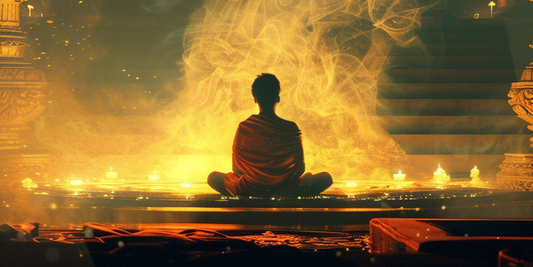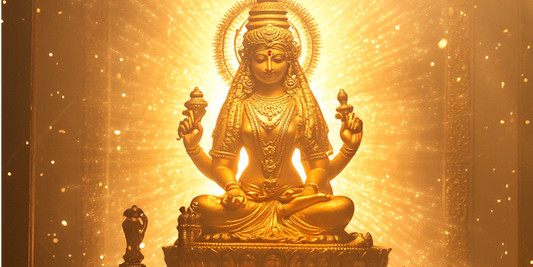
The Inner Battlefield: What and Where is the War with Asuras?
Bhakti saint Kabir Das ji says,
“Bura jo dekhan main chala, bura na miliya koye,
Jo man khoja apna, mujh se bura na koye.”
(I kept looking for evil in others and found nothing. On searching my own heart, through introspection, I realised that no one is more evil than myself.)
The demons we encounter in the scriptures have a greater purpose to serve. They have to be understood beyond their appearance: fearful features, horns on the head, and uncontrolled power and strength to defeat all goodness (devas).
The demons symbolise our negative tendencies, while the battle is all in mind—the conflict between the modes of goodness (sattva) and ignorance (tamas) that we fight every day. Defeating and destroying the demons also indicates a sadhak’s progress.
There are six main chakras in the body, and the seventh is Sahasrara. Durga Saptashati mentions six sets of asuras and the seventh is Surat and Samadhi (the state of realisation).
Let’s explore the deeper meaning behind the conflicts with some Asuras we’ve come across in the Navadurga stories.
The Mighty Mahishasura
Mahishasura represents lust and anger; both these emotions lead to a massive surge of energy. If uncontrolled, they can bring any seeker down. To help overcome them, Devi Ma (the divine energy or Shakti) comes to the seeker's aid. A mindful seeker transforms and uses the energy of lust and anger for positive means. Once the Mahishasura hurdle is crossed, the seeker moves further.
The Deluding Dhumralochana
Dhumralochana (the powerful commander of Shumbh-Nishumbh) awaits at the next stage. ‘Dhumra’ refers to smoke, while ‘lochan’ means sight. Dhumralochana symbolises illusion and distraction. When we accumulate stress, our inner vision becomes hazy, and our perceptions unclear. Mother Divine destroys Dhumralochana, leading the seeker to a stage where the sufferings and troubles of sound and taste no longer affect them.

Matters of Passion and Intellect: Chanda-Munda
Next, the seeker is faced with Chanda and Munda. The Sanskrit word 'Chand' refers to passion, cruelty, and violence. 'Mund' implies the head, intelligence, and inner conflicts. On the journey of spiritual evolution, one may have overcome anger and rage. However, the energy of these emotions needs to be channelised somewhere. If you are passionate about something, all your energy will be driven into that passion. It could even be a cause—good or bad. Uncontrolled passion can also become a distraction.
Interestingly, two journeys are always made alone: the one towards self-realisation and the other towards death. Therefore, sincere seekers must go beyond their passions and resolve internal conflicts. Many emotions, such as repentance, regret, and guilt, will torment a seeker. At that time, the seeker must remain strong and calm, allowing the storm of emotions to pass.
The Ever-growing Desire: Raktabeeja
The next demon killed by Devi Ma is Raktabeeja. Raktabeej symbolizes desires and self-critical thoughts. Numerous clones of Raktabeej are born from every drop of his blood. Similarly, one desire or negative thought breeds many more, leading to an unbreakable cycle. At that moment, you need Ma Kali's aggression. She drinks Raktabeej's blood before it can touch the ground. Desire and negativity must also be dealt with aggressively and crushed as soon as they arise.
Game of Dualities: Shumbh-Nishumbh
The last demons to be killed̦—Shumbh and Nishumbh—symbolise duality. At the final stage, the seeker must break free of all duality: pleasant-unpleasant (Shubh-ashubh?), moral-immoral, good-bad, right-wrong, and religious-irreligious. Our thoughts and actions are guided by people’s opinions and social conditioning. With Sadhana and Ma Jagdamba’s grace, seekers overcome these and achieve freedom.
Ma Kalaratri is the goddess of the dark night. She personifies the acceptance of fears. Her worship gives us the strength to face our fears, accept them, and move toward light and liberation.







Comments
No comments yet. Be the first to share your thoughts.
Leave a comment